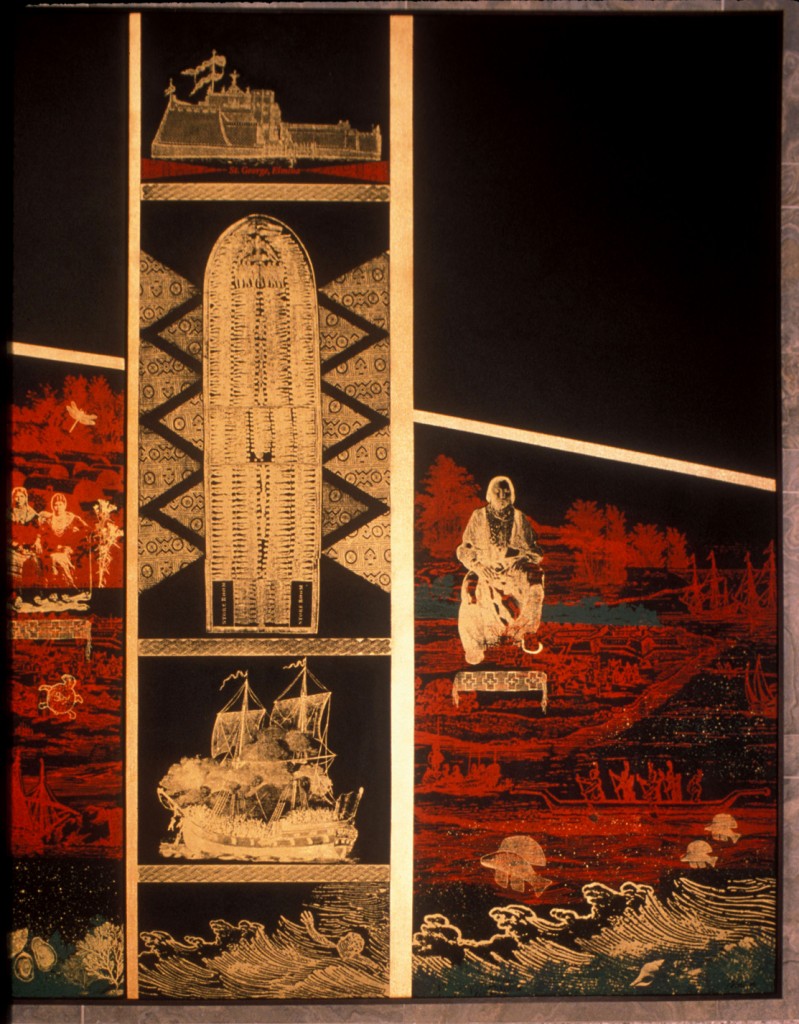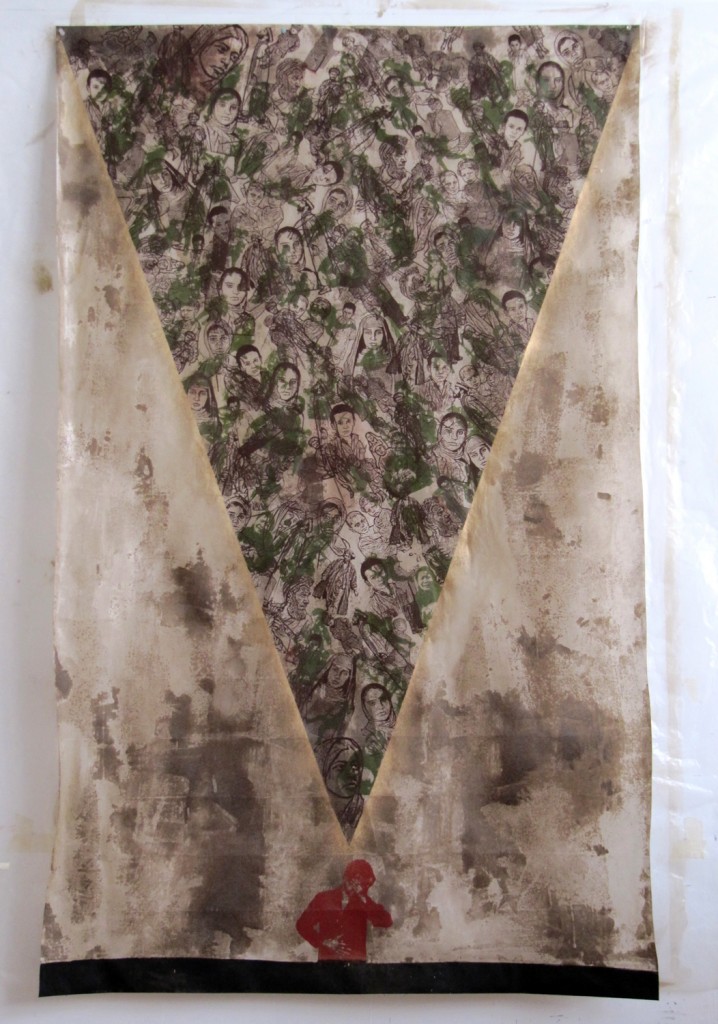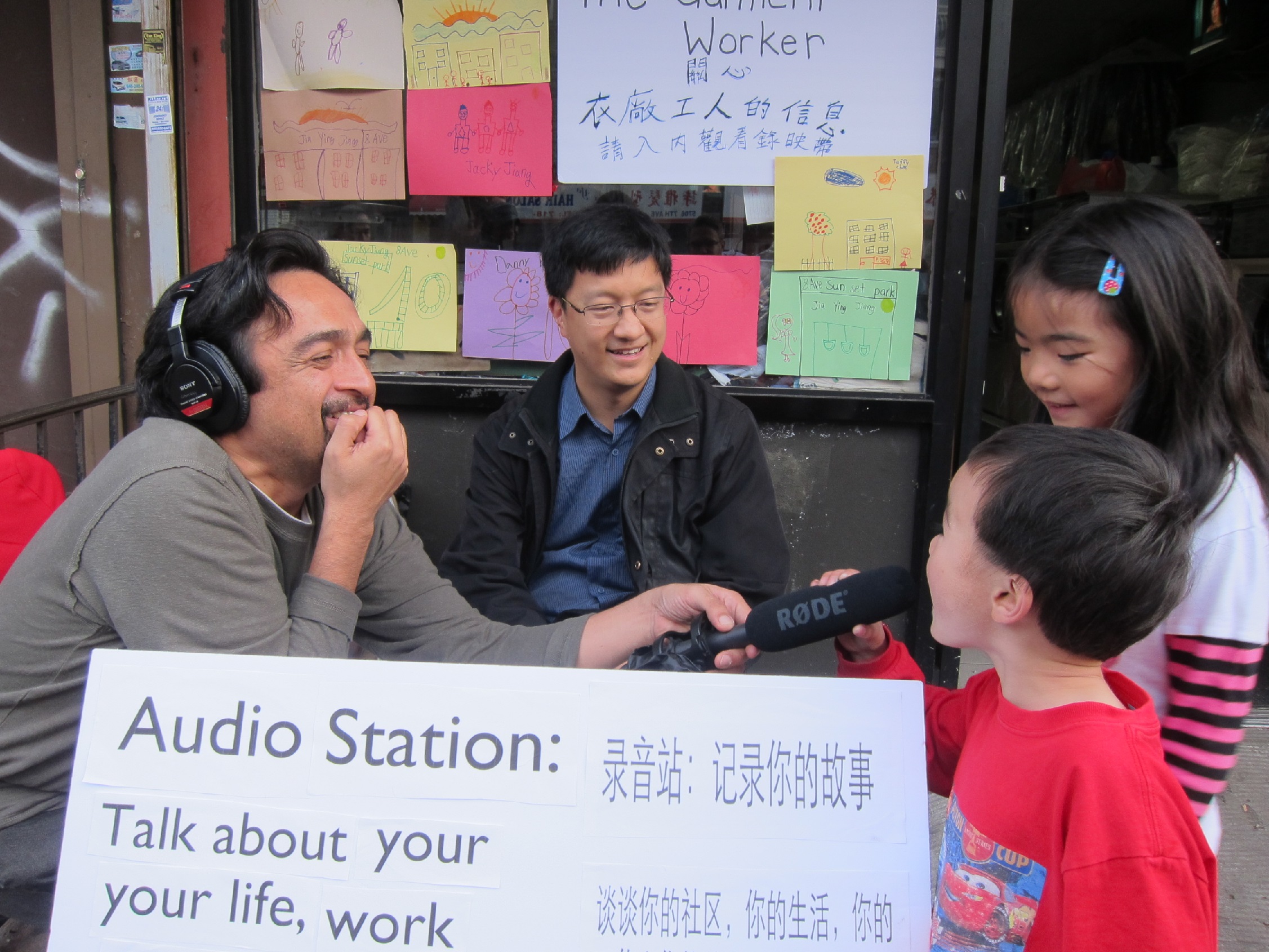Each year, our artist development program, Create Change, supports 15 to 20 artists developing their socially engaged creative practice through our Fellowship, Residency, and Commissions program. In 2012, we began asking our Create Change artists to pair up for Creative Conversations: open-ended creative exchanges to be published on our blog. Read on to meet our Create Change alumni.
Tomie: One of the reasons I am so enthused about doing this interview is that I feel both of us work in the Asian community and have so much to share and learn from each other. The big difference is that I started doing community art in the 1970’s —almost 40 years ago—and the art world has changed significantly since those days. The internet, of course, has completely altered the way we communicate with each other, but the ways in which contemporary artists position themselves in relation to the world around them is also markedly different. I still refer to the public work that I do as ‘community art’ but the term ‘art based social practice’ is now more commonly used. How would you describe what you do–what does an art-based social practice mean to you, and what is the relationship between art and activism in your own life?

Betty: My practice as multi-media artist is shaped and influenced by my direct experience as a community labor organizer, media justice activist, and daughter raised by garment worker parents. I believe that our social change movements need art and media that can popularize our issues and create a culture of resistance that can move people to take action. In my artwork, I approach social justice issues through my own personal story, family narrative and community’s history. My body of work has explored issues like the labor rights of Chinese workers in the U.S., immigration reform, racial justice, militarism, and gender equity.
While my short films, multi-media and interactive art projects are meant to be educational, inspiring and thought provoking, my bigger intention is to provoke people to question our society’s power structure and this system that serves the corporate interests of the 1%. The subject of my multi-media projects usually document the courage and resilience of historically marginalized communities who have boldly come forward to advocate on behalf of themselves and others. Through my direct engagement in communities, I have access to people’s stories and can provide a platform for their voices to be elevated and heard. For me, it’s important to maintain my integrity as a cultural worker and mediamaker. Therefore, it’s vital that the people featured in my work trust me, and believe that I will represent their stories and experiences with the utmost respect and dignity.
Tomie: I was particularly struck by how good you were at engaging the people who participated in your Create Change laundromat project, “The Garment Worker”. Neighborhoods like Sunset Park present special challenges and unless you speak all four or five Chinese dialects, there will always be cultural obstacles that make it difficult to communicate and involve the people you want to reach. What has been the most difficult/challenging aspect of what you do, and what would you tell other artists who are struggling with similar issues?

Betty: “The Garment Worker” helped spark dialogue between immigrant and American born Chinese community members who talked about their own working conditions, life, family and community. I set up an audio podcasting station to record members oral histories about their neighborhood, work and life. In addition, I taught basic video and lent out flip video cameras so a handful of residents could interview one another or shoot footage of their neighborhood.
What became apparent to me is that community residents definitely wanted to tell their story but there is also a lot of shame attached to it. For many, coming to this country as immigrants and barely making ends meet is nothing they want to share with the world. I found it challenging to get older workers and residents to talk but younger folks were more willing to be open and share their experiences and stories in this country. I really wanted to get across to folks telling their own story, from their own voice, that whatever they wanted to share was powerful in itself. Some of the community members weren’t aware that there were workers organizations that they could go to with their workplace problems to organize. This was an opportunity for me to share what others in the community are doing to fight for better conditions. For many, an audio recording was much less intimidating than going on camera to talk. So after recording a dozen or so audio recordings, folks kept asking me ‘where can I find my story’? And I realize that now there should be a Part 2 to this project. I’m trying to figure out the right medium, but I am thinking about creating something online where residents can go to hear their own recorded stories. My biggest lesson learned through this project is that relationships and trust are really important. The relationships that are fostered with community based organizations as well as individual residents who are willing to help out, participate and spread the word is invaluable.
Betty: Tomie, I am really drawn to your work and commitment to document and showcase the faces of everyday people from the Asian community and other underrepresented communities. I’m inspired by your mural projects that do the same and highlight those fragile voices. What is so inspirational is your commitment to being an artist that creates community-minded art for so many years. I personally wonder how have you been able to do this? What challenges and barriers have crossed your path? What advice do you have for young emerging artists?

Tomie: Over the course of several decades of work, I find that my assumptions about my art-based social practice are constantly being challenged by the people I work with. Working with the community used to mean working in a neighborhood, on a block or on the street. In a Post-9/11 era, we have to redefine community to include the more global world we live in. I believe wholeheartedly in the concept of working locally, but I think that your experiences with groups of immigrant workers is now the new reality. We are all migrants in some form or fashion, struggling with issues of displacement. A more glocal world, however, means our roles as artmakers can be so much more fluid and inclusive. I don’t think I can offer much advice to younger artists, but I have learned a few lessons along the way that have humbled me and they are:

1. Making art with the community is very hard work and beware of using formulas for success. We tend to avoid conflict, or view it as a measurement of failure because it is unpleasant and threatening. But if we are going to make art outside of the art world, in places where art is not usually made, we need to realize how difficult this process actually is. We are not just making art, but exchanging ideas about what gives our lives meaning and worth. Conflict, failures and mistakes are part of the process.
2. It takes a long time to build the kind of trust you mentioned was necessary to get the Chinese garment workers to open up to the process. Be patient and committed.
3. Being an outsider is sometimes not an obstacle. Entering a community with respect and without the historical and social baggage of insiders sometimes allows you to listen and participate in unexpected ways. As an outsider, you may be able to mediate situations that are very charged politically, racially or socially. It is not always necessary for everyone to look and think alike.
and 4. Artists are part of the community too. We need to support each other and the work we are doing. Thank you, Laundromat Project! I’m grateful that you understand how important it is for artists to exchange ideas and celebrate their accomplishments.
